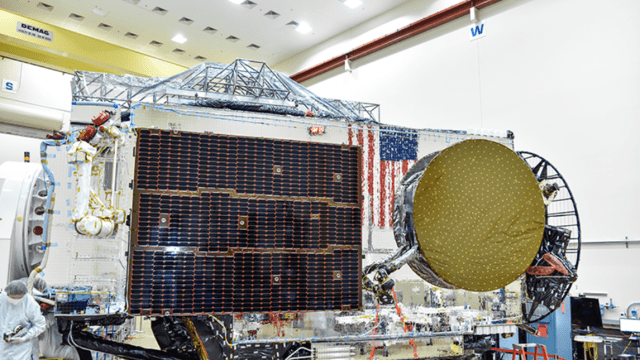Following the launch of its next-generation satellite, Hughes Network Systems is now starting to offer faster internet speeds to compete with its main industry rival SpaceX.
The Maryland-based company has launched new high-speed satellite internet plans for its customers in the Americas, with download speeds up to 100 megabits per second (Mbps), Hughes announced. This brings it a little bit closer to SpaceX’s Starlink internet speeds, which ranges between 25 to 220 Mbps.
Hughes launched its next-generation Jupiter 3 (EchoStar XXIV) satellite on July 29. A SpaceX Falcon Heavy rocket carried the internet satellite, delivering it to a geosynchronous orbit that’s 35,786 kilometres above the Earth surface. Unlike SpaceX, which is building a satellite constellation of Starlink satellites in low Earth orbit that’s around 550 kilometres above Earth, Hughes is relying on its Jupiter 3 satellite to deliver connectivity to rural areas.
“This purpose-built satellite is engineered uniquely to meet our customers’ needs and target capacity where it’s needed most, such as the most rural regions of the Americas, so they can stay connected to the applications and services they depend on every day,” Hamid Akhavan, CEO of EchoStar (Hughes’ parent company), said in a statement. “Whether helping a student in Mexico expand her horizons with access to technology, connecting a farmer in Idaho with the tools to monitor his crops, or connecting a senior in Montana to her doctor via a telehealth appointment, JUPITER 3 will connect our customers to what matters most.”
Although it’s considerably farther away than Starlink satellites, Jupiter 3 is enormous. The ultra-high-density satellite, which is as large as a school bus and weighs over 9,000 kilograms, ranks among the world’s largest communication satellites. Jupiter 3 operates mainly in Ka-band frequencies (which range between 26.5–40 gigahertz), which send data to Earth through 300 spot beams that cover a wide area while reducing congestion issues. Spot beams efficiently allocate and direct satellite communication signals to specific regions on Earth, allowing for better coverage and reduced interference.
Still, the distance does pose a problem for the amount of time it takes for the data to reach Earth, although Hughes claims that Jupiter 3 has a dedicated fibre backbone to reduce latency. The lower altitude of the Starlink satellites reduces the distance that data has to travel, thereby reducing latency and making the satellite internet more competitive with on-the-ground internet services.
It’s still not clear whether Hughes can compete with SpaceX, or whether the two services can somehow complement each other in the future. But one thing is certain: the era of satellite internet is most certainly upon us.
